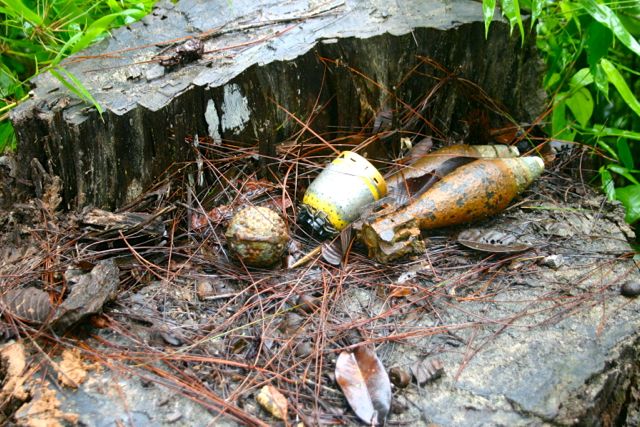Project Sekong 2013: Nearly Half Of All Victims Are Intentionally Handling UXO
Here’s a tree stump on which people have placed four pieces of unexploded ordnance. Clearly, somebody decided that moving these items was worth the risk. Our team would handle two of the pictured items warily; the other two items, both cluster munitions, we will not move under any circumstances.
Why did someone take the risk?
In Laos, most people are wise enough to co-exist with ordnance if they can. They’ll command children to take a different route to school, or forbid them to venture into a dangerous corner of the family garden. They might stack logs, or rocks on an item that they fear a family member or neighbor might stumble upon.
But some items turn up (for instance, after a heavy rain) in such well-trafficked areas that families will decide that coexistence is not possible. In that case, someone will volunteer to move the item— usually not far, but to a place assumed to be a safer location. Perhaps they’ll drop the item off a bridge into a river. Or, drop it down a well or toilet pit. Or, put it on a termite mound. Or, as pictured above, on a tree stump.
More than once we’ve been summoned to destroy a dangerous item only to discover that, before our arrival, a volunteer has moved the item. When that happens we study the landscape, consider likely resting places, and inspect them one at a time. Inevitably, we’ll find the wayward item on a stump, on an anthill or in the hollow of a tree.
Sadly, nearly half of all accident victims here are injured while intentionally handling ordnance. If more Lao communities were served by “rapid response teams” fewer villagers would feel compelled to risk their lives moving ordnance.

